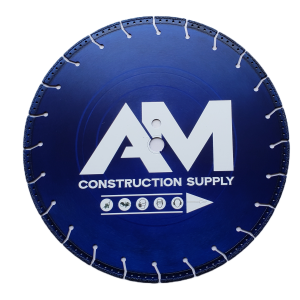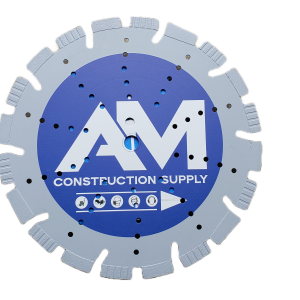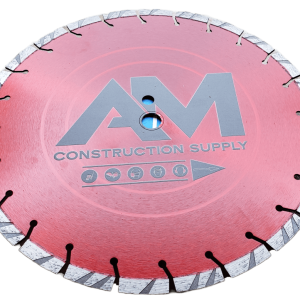Did you know that over 70% of DIY enthusiasts and professionals agree that the right tool can make or break a granite cutting project? Choosing the best diamond blade for cutting granite isn’t just about getting the job done; it’s about precision, safety, and preserving the beauty of this tough material. With a myriad of options on the market, pinpointing the perfect blade demands understanding its features, compatibility, and durability. This guide is your one-stop resource for navigating through those choices, ensuring you select a blade that not only meets your needs but exceeds your expectations. Whether you’re tackling a small home project or gearing up for large-scale construction, let’s dive into finding that ideal diamond blade together.
Key Takeaways
- Prioritize Quality: Always opt for high-quality diamond blades when cutting granite to ensure clean cuts and durability. The investment in a premium blade pays off through precision and longevity.
- Match the Blade to the Tool: Select diamond blades specifically designed for your cutting tool, whether it’s a bridge saw, CNC machine, angle grinder, or walk-behind saw, to achieve the best results.
- Understand Granite Cutting Essentials: Familiarize yourself with the properties of granite and the importance of proper blade cooling and speed to prevent damage to both the stone and the blade.
- Consider Blade Type for Specific Jobs: For intricate cuts or small projects, small saw or angle grinder blades may be more appropriate, while larger, stationary machines like bridge saws require specialized blades.
- Safety First: Always adhere to safety guidelines when operating cutting tools and handling diamond blades to prevent accidents and ensure a smooth cutting process.
- Informed Choice is Key: Utilize the insights from the article on different blade types and their applications to make an informed decision that meets your specific granite cutting needs.
Understanding Diamond Blades
Composition
Diamond blades for cutting granite are not all the same. The diamond grit and metal bond hold the key to their effectiveness. The grit size of the diamonds determines how finely the blade can cut through granite. Smaller grit sizes result in smoother cuts, while larger sizes offer faster cutting speeds.
The metal bond’s composition affects both the blade’s cutting ability and its lifespan. Harder bonds keep the diamonds in place longer, making them suitable for softer materials. However, granite requires a softer bond that allows new diamonds to be exposed as the blade wears down.
Materials like cobalt, nickel, and bronze in the bond can enhance performance when cutting granite. They help manage heat and wear, ensuring consistent cutting speeds and extending the blade’s life.
Types
There are three main types of diamond blades used for granite cutting: segmented, turbo, and continuous rim.
Segmented blades have gaps between segments to remove debris and cool the blade, making them ideal for rough cuts in granite. Turbo blades feature a continuous rim with serrations, offering smoother cuts with less chipping than segmented ones. Continuous rim blades provide the smoothest cuts, perfect for delicate granite work where precision is paramount.
Each type excels in different scenarios:
- Segmented blades are best for outdoor or heavy-duty tasks.
- Turbo blades balance speed and smoothness for general use.
- Continuous rims are preferred for fine, detailed work indoors.
Moreover, these blades come with various arbor sizes and hole patterns. This customization ensures they fit a wide range of saws and equipment.
Selection Criteria
Choosing the right diamond blade involves more than just picking a type. The blade diameter and arbor size must match your machine to ensure compatibility and safety. A mismatch can lead to poor performance or even accidents.
The hardness of the material you’re cutting – in this case, granite – also plays a crucial role. Granite requires a diamond blade with a soft bond to allow for effective cutting without premature wear on the diamonds.
Finally, consider the specific task at hand. A segmented blade might be your best bet for quick, rough cuts outdoors. For indoor projects requiring precision, a continuous rim blade could be more appropriate.
Granite Cutting Essentials
Granite Properties
Granite, known for its hardness and durability, demands a specific type of diamond blade for efficient cutting. Its hardness means that not just any blade will do; it requires one that can withstand the material’s resistance without wearing down too quickly. This is why choosing a blade designed specifically for hard stones like granite is crucial.
Granite isn’t uniform in composition. It can vary greatly, with some types being harder than others. These variations affect how the material interacts with different blades. Therefore, understanding the specific type of granite you’re working with is essential. This knowledge ensures you select a blade capable of handling its unique characteristics.
Cutting Techniques
To achieve smooth cuts and prevent chipping, adopting best practices in cutting techniques is vital. Precise measurements and gentle handling are key to maintaining the integrity of the granite piece. One misstep can lead to unsightly chips or cracks, compromising the material’s appearance and structural integrity.
Water cooling plays a pivotal role in extending the life of your diamond blade and reducing dust production during cutting. The water helps keep the blade cool, preventing overheating and potential damage from high temperatures. This technique not only prolongs your tool’s lifespan but also creates a safer work environment by minimizing airborne particles.
Different projects require different cuts—be it straight lines or curves. Mastering techniques for both ensures versatility in granite fabrication. Straight cuts are fundamental, but curved cuts demand more skill and the right equipment to execute flawlessly.
Equipment Needed
Cutting granite requires more than just a good blade; it needs the right equipment to support precise and efficient work. Essential tools include:
- Bridge saws
- Rail saws
- Tile cutters
Each tool caters to specific needs within granite cutting, from large slabs to intricate details. Ensuring that your chosen diamond blade has a compatible arbor size with these tools is critical for effective operation.
Safety should never be overlooked when cutting granite. Proper gear like gloves, goggles, and dust masks protect against common hazards encountered during cutting processes. Accessories like clamps and guides also contribute significantly to achieving desired outcomes safely and efficiently.
Diamond Blades for Bridge Saws
Features
Diamond blades designed for bridge saws come with laser-welded segments. This technology boosts their durability significantly. They withstand the high stress of cutting through granite, a hard material. The welds ensure that the segments do not easily break off during intense operations.
The thickness of the blade plays a crucial role in achieving precise cuts. Thinner blades are ideal for intricate designs, providing clean edges without chipping the granite. However, thicker blades offer more stability for straight cuts. It’s essential to choose based on the project’s needs.
e diamond blades feature noise-reduction technology. This is beneficial in busy workshops where multiple machines operate simultaneously. These blades cut down on sound output, creating a more comfortable working environment.
Benefits
Choosing the right diamond blade for bridge saws ensures clean and precise cuts in granite. This precision is vital for both aesthetics and fitting pieces together during installation. With cleaner cuts, there’s less need for finishing work, speeding up the entire fabrication process.
Efficiency gains are notable when using high-quality diamond blades. They slice through granite quickly, reducing the time spent on each piece. This acceleration benefits both fabrication and installation processes, allowing projects to move forward faster.
There’s significant cost savings involved as well. Durable blades mean fewer changes are needed over time, saving money on replacements. Also, with reduced material waste from cleaner cuts, there’s less need to purchase extra granite to account for errors. This efficiency translates into lower overall project costs.
Diamond Blades for CNC Machines
Precision Cutting
Blade specifications are crucial for achieving precise cuts in granite. The right diamond blade will have a specific bond hardness and diamond grit size, tailored to cut through granite efficiently. These specifications ensure that the blade can make clean, straight cuts without chipping or breaking the material.
Stability and vibration reduction play significant roles in precision cutting. A stable blade reduces wobble, leading to more accurate cuts. Techniques to reduce vibration include using blades with vibration-dampening cores. This technology minimizes the risk of deviations, ensuring each cut is as intended.
Selecting a blade that matches the cutting technique is vital for accuracy. Different CNC operations might require varied cutting speeds or cooling methods. Therefore, choosing a diamond blade designed for these specific conditions ensures optimal performance and precision.
Durability
The composition and design of diamond blades significantly contribute to their longevity. High-quality diamond blades incorporate a balanced mix of diamond crystals and metal bond materials. This balance is critical for maintaining sharpness and resistance against wear over time.
Selecting a blade suited to the hardness of granite is essential for durability. Granite requires a blade with a soft bond that allows new diamonds to be exposed as it wears down. This adaptation prevents premature dulling and extends the blade’s life.
Proper maintenance and usage are key to extending the life of granite cutting blades. Regular cleaning, correct installation, and adherence to recommended RPMs prevent overheating and potential damage. Using water as a coolant can reduce dust build-up and decrease wear on the blade.
In comparison to bridge saws discussed earlier, CNC machines demand more from diamond blades due to their intricate cutting capabilities and automation levels. While bridge saws focus on larger cuts, CNC machines perform detailed work requiring blades that offer both precision and durability under different stress conditions.
Small Saw Diamond Blades
Portability
Small saw diamond blades stand out for their ease of transportation. They are ideal for professionals who require on-site cutting of granite and other materials. Unlike larger, stationary blades used in workshops, these smaller blades can be easily carried to various job sites. This portability significantly reduces the time and effort needed to start cutting tasks.
These blades fit a range of portable cutting equipment, making them highly versatile. Whether it’s a handheld saw or a small table saw, there’s likely a diamond blade designed to fit. Manufacturers offer blades that are compatible with many handheld machines, ensuring flexibility for different project needs. This compatibility enhances the efficiency of workers who need to switch between tools quickly while maintaining precision in their cuts.
Versatility
Certain small saw diamond blades are engineered to cut through not only granite but also other hard stones like marble and quartz. This capability is crucial for projects requiring multiple types of materials to be cut with precision and speed. The versatility of these blades allows users to tackle various tasks without changing tools frequently.
Many of these blades are suitable for both wet and dry cutting applications. Wet cutting minimizes dust and extends the blade’s life by keeping it cool, while dry cutting offers convenience when water is not readily available. This dual functionality ensures that professionals can adapt to any job site condition.
Furthermore, these diamond blades come with different arbor sizes to fit a variety of machines. Such adaptability means workers can use the same high-quality blade across different equipment, optimizing their workflow and reducing downtime caused by incompatible tools.
Angle Grinder Blades
Flexibility
Choosing the right blade for cutting granite is crucial, especially when working with an angle grinder. These blades offer incredible flexibility in cutting techniques. They can make both straight and curved cuts with precision. This adaptability is essential for intricate designs and shaping granite countertops or tiles.
Adjustable arbor sizes are another advantage. They ensure these blades fit a wide variety of angle grinders and other equipment. This versatility means you don’t need to buy new tools for different projects.
e blades stand out for their suitability in both heavy-duty and delicate tasks. They cut through thick slabs of granite without chipping edges, which is vital for high-quality finishes. At the same time, they handle more delicate cutting jobs with ease, preserving the material’s integrity.
Cost-Effectiveness
Investing in a high-quality diamond blade for your angle grinder might seem expensive at first glance. However, it leads to significant long-term savings. These blades last longer than standard ones, reducing the need for frequent replacements. This durability minimizes both downtime and additional costs over time.
The right blade also helps reduce material waste by making precise cuts. This efficiency saves money on materials by avoiding costly mistakes and rework.
There are competitively priced options among recommended brands that do not sacrifice quality for cost. These options ensure that cutting granite remains both affordable and effective, providing excellent value for money.
Walk Behind Saw Blades
Heavy-Duty Use
For professionals who work with granite daily, such as in countertop fabrication, choosing the right diamond blade is crucial. These tasks demand blades that can withstand the rigors of continuous cutting without faltering. It’s essential to select blades that boast high durability specifically designed for heavy-duty applications.
They often feature reinforced cores and heat-resistant segments. Such features ensure they can handle the intense friction and heat generated during cutting. This resilience is vital in industrial settings where downtime means lost revenue.
Efficiency
When it comes to efficiency, not all diamond blades are created equal. The correct size and type of blade can significantly speed up the granite cutting process. Advanced blade technologies play a pivotal role here. They reduce energy consumption while enhancing cut speed, which is especially beneficial when working with materials as hard as granite.
Blades designed for granite bring an added advantage by minimizing downtime. Their specialized design cuts through granite with less resistance than general-purpose blades, making them more efficient for specific tasks.
Why Choose Quality Diamond Blades?
Superior Quality
Top-rated brands pour immense effort into crafting their diamond blades. They select premium materials and employ advanced manufacturing techniques. This ensures each blade can handle the rigors of cutting through hard granite.
Quality assurance is a critical step for these brands. They conduct rigorous tests to guarantee their blades meet high-performance standards. This process filters out any defects, ensuring only the best blades reach the market.
Reputable brands have built their names on producing superior quality blades. Professionals and DIY enthusiasts alike trust these brands for their reliability and efficiency in granite cutting tasks.
Longevity
High-quality diamond blades for granite boast a long service life. Several factors contribute to this durability. The use of top-notch materials and precision in manufacturing are primary reasons. These blades withstand extensive use without losing their effectiveness.
Selecting the right blade, performing regular maintenance, and using it correctly are vital. These practices extend the blade’s lifespan significantly. Users who follow these guidelines find their blades last longer, providing more value for their investment.
Investing in quality diamond blades means fewer replacements over time. This cost-benefit is significant for professionals who rely on these tools daily. It translates to savings and reduced downtime due to blade changes or failures.
Customer Support
Choosing the right diamond blade for specific granite cutting needs can be daunting. Here, customer support from reputable brands shines. They offer expert advice, helping users select the ideal blade for their project.
Customer support also plays a crucial role in troubleshooting and maximizing blade performance. They provide tips on maintenance and usage that enhance the blade’s efficacy.
Many top brands go further by offering additional services. Custom arbor sizes and hole patterns are available upon request, catering to unique project requirements.
Making the Right Choice
Assessing Needs
Before diving into the vast sea of diamond blades, it’s crucial to assess your specific needs for cutting granite. Granite comes in various types, each with its unique hardness and texture. This diversity demands a careful selection of the cutting blade to ensure smooth and precise cuts.
It’s not just about picking any diamond blade off the shelf. The desired cut quality plays a significant role in this choice. Whether you’re aiming for a rough cut or a finely polished edge will guide your decision towards the appropriate blade type.
Moreover, not all blades are compatible with every cutting equipment out there. Ensuring that the chosen diamond blade fits your machinery is a step you cannot skip.
Consulting with experts or manufacturers can shed light on which blade suits your project best. They offer tailored recommendations based on years of experience and technical know-how, making this step invaluable for achieving optimal results.
Comparing Options
Once needs are assessed, comparing different brands and types of diamond blades becomes your next milestone. The market is flooded with options, making it tempting to opt for either the cheapest or the most readily available solution. However, such an approach might lead to disappointing outcomes.
The advantages of thorough comparison lie in finding a blade that balances cost-effectiveness with performance. High-quality blades might come at a higher price point but often result in lower long-term costs due to their durability and efficiency in cutting through tough granite.
Customer reviews can provide real-world insights into how different blades perform under various conditions. These testimonials can highlight potential issues or benefits that aren’t immediately apparent from product descriptions alone.
Resources like the Diamond Blades page offer a comprehensive inventory from numerous brands, simplifying the comparison process. Here, you can filter options based on specific criteria such as price, performance ratings, and compatibility with different types of granite.
Final Remarks
Selecting the best diamond blade for cutting granite boils down to understanding your specific needs and the capabilities of different blades. Whether you’re working with bridge saws, CNC machines, or handheld tools like angle grinders and walk-behind saws, the right diamond blade can make a significant difference in both performance and end results. Quality should be your guiding principle, as investing in superior diamond blades ensures efficiency, precision, and safety in your cutting tasks. By prioritizing quality and suitability for your specific application, you’ll achieve optimal outcomes in your granite cutting projects.
Now’s the time to make an informed decision. Review the types of diamond blades discussed, consider your equipment and project requirements, and choose a blade that promises the best balance of precision, durability, and value. Your perfect cut begins with the right tool—don’t settle for less. Dive into our selection of top-tier diamond blades today and elevate your granite cutting game.
Frequently Asked Questions
What is the best diamond blade for cutting granite?
The best diamond blade for cutting granite depends on your cutting tool. For bridge saws and CNC machines, opt for blades specifically designed for these tools. For smaller projects, angle grinder and small saw blades are ideal.
Why is it important to choose a quality diamond blade?
Choosing a quality diamond blade ensures precision cuts, longer lifespan of the blade, and ultimately saves money by reducing replacement frequency. Quality blades also minimize the risk of chipping the granite.
Can I use the same diamond blade on different saws?
No, you should use diamond blades that are specifically designed for the type of saw you’re using. Blades are engineered differently for bridge saws, CNC machines, small saws, and angle grinders to optimize performance.
How do I know if a diamond blade is suitable for granite?
Look for blades labeled as suitable for cutting granite or those with specifications indicating they can cut hard stone materials. The product description or packaging usually provides this information.
What benefits do walk-behind saw blades offer?
Walk-behind saw blades are ideal for larger projects requiring deep cuts. They provide stability and precision over long stretches of cutting, making them perfect for outdoor or flooring projects involving granite.
Is it worth investing in specialized diamond blades for CNC machines?
Yes, investing in specialized diamond blades for CNC machines is crucial. These blades are designed to handle the precision required by CNC machining, ensuring clean cuts and reducing the risk of damage to both the stone and the machine.





